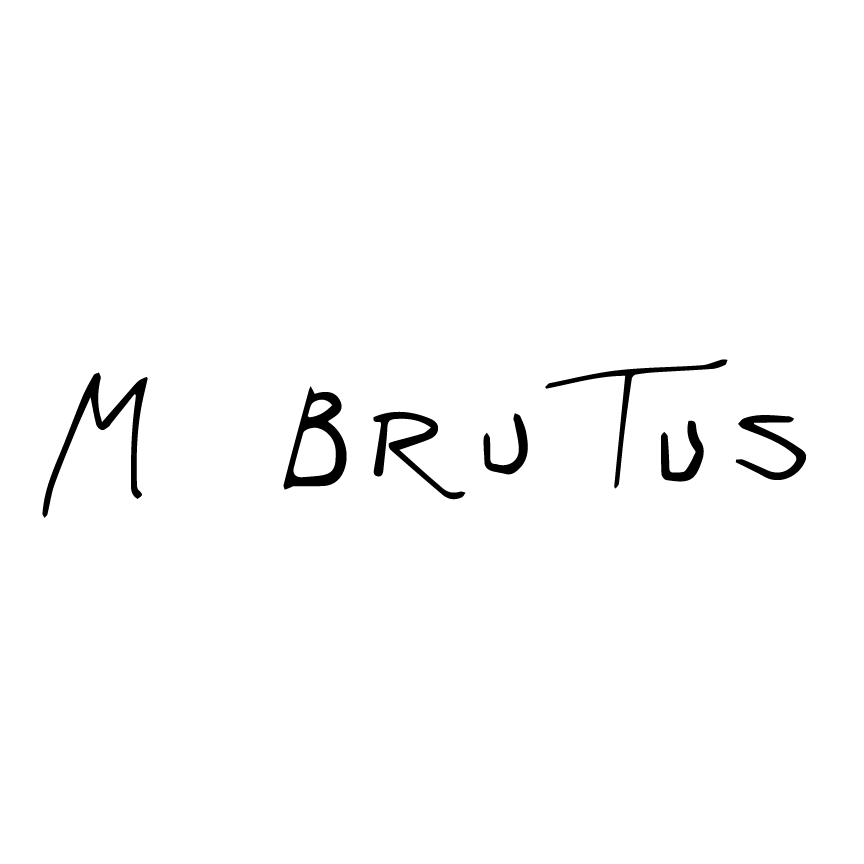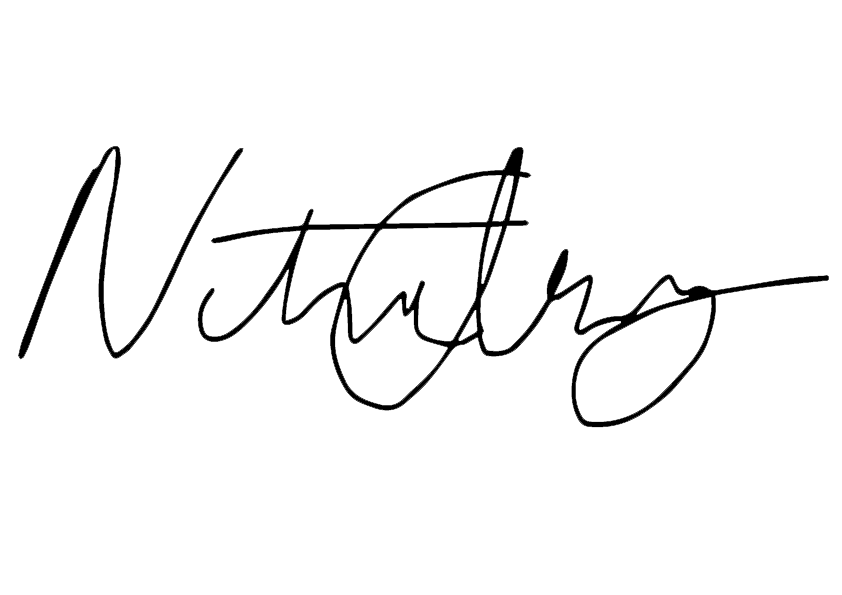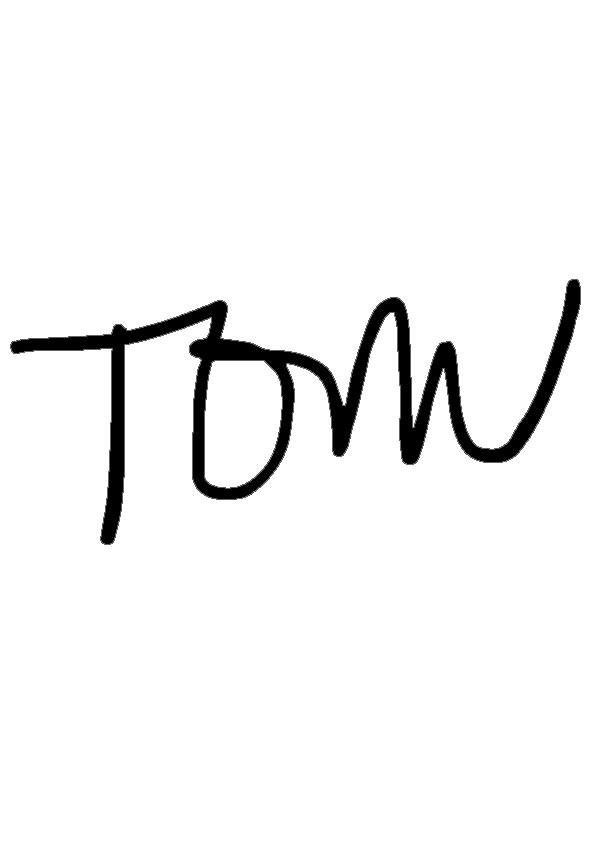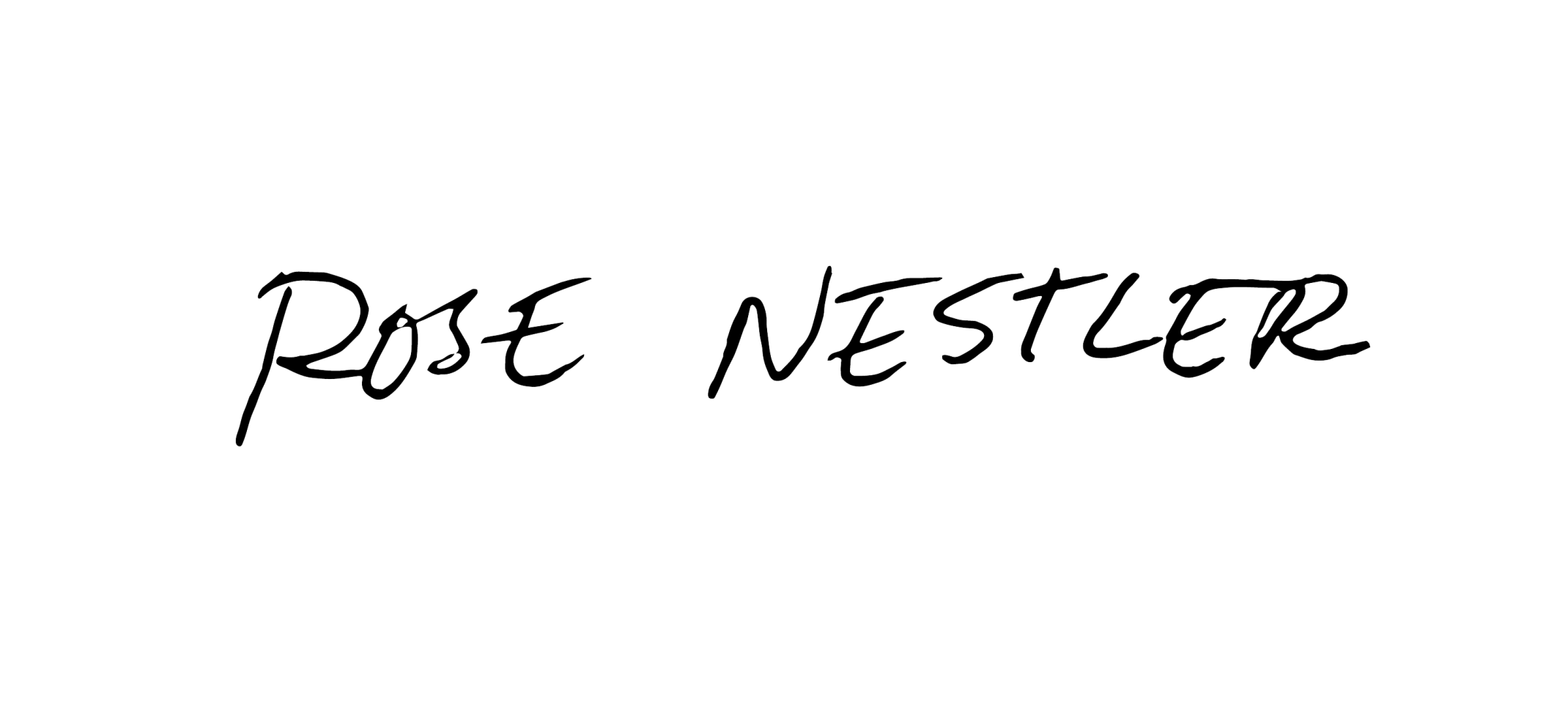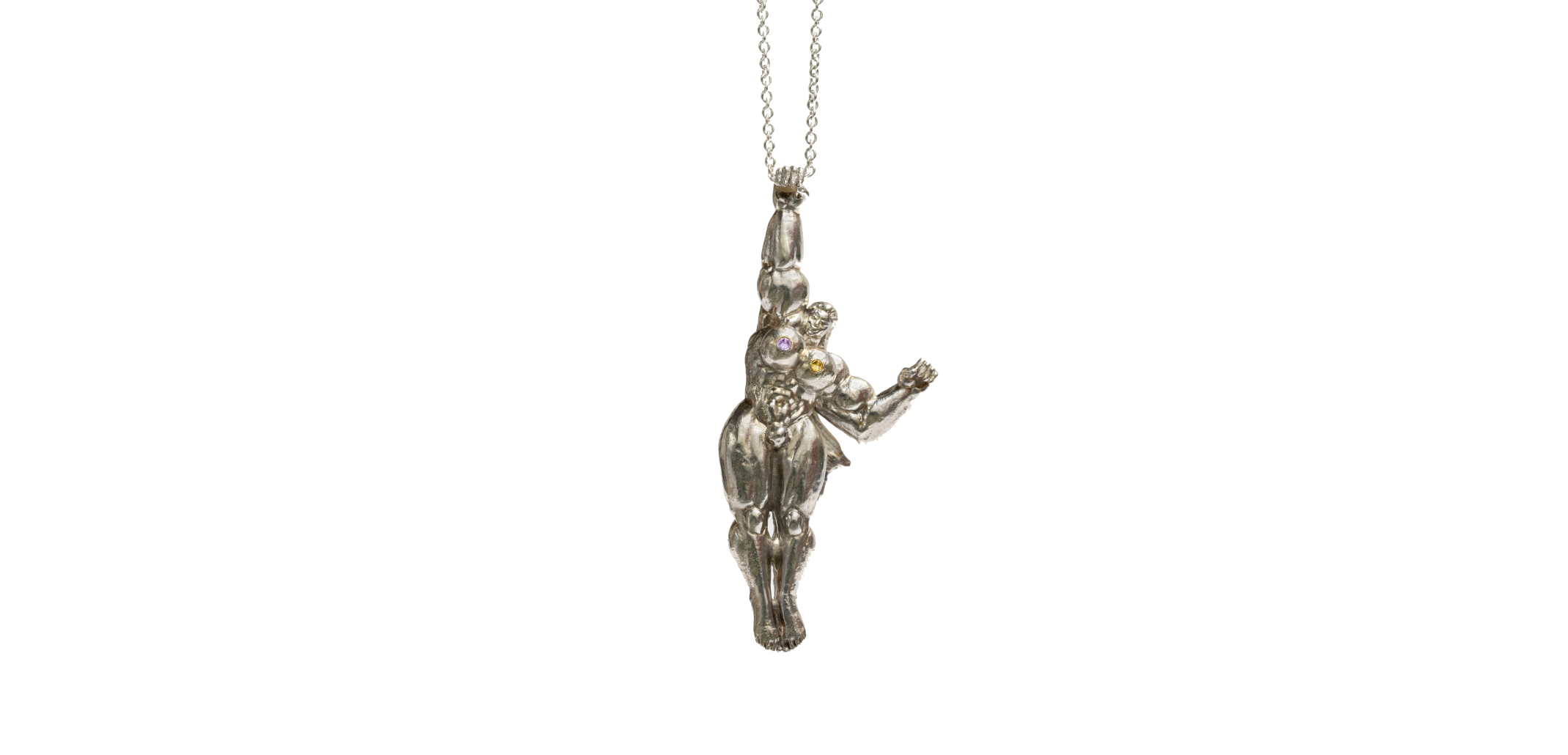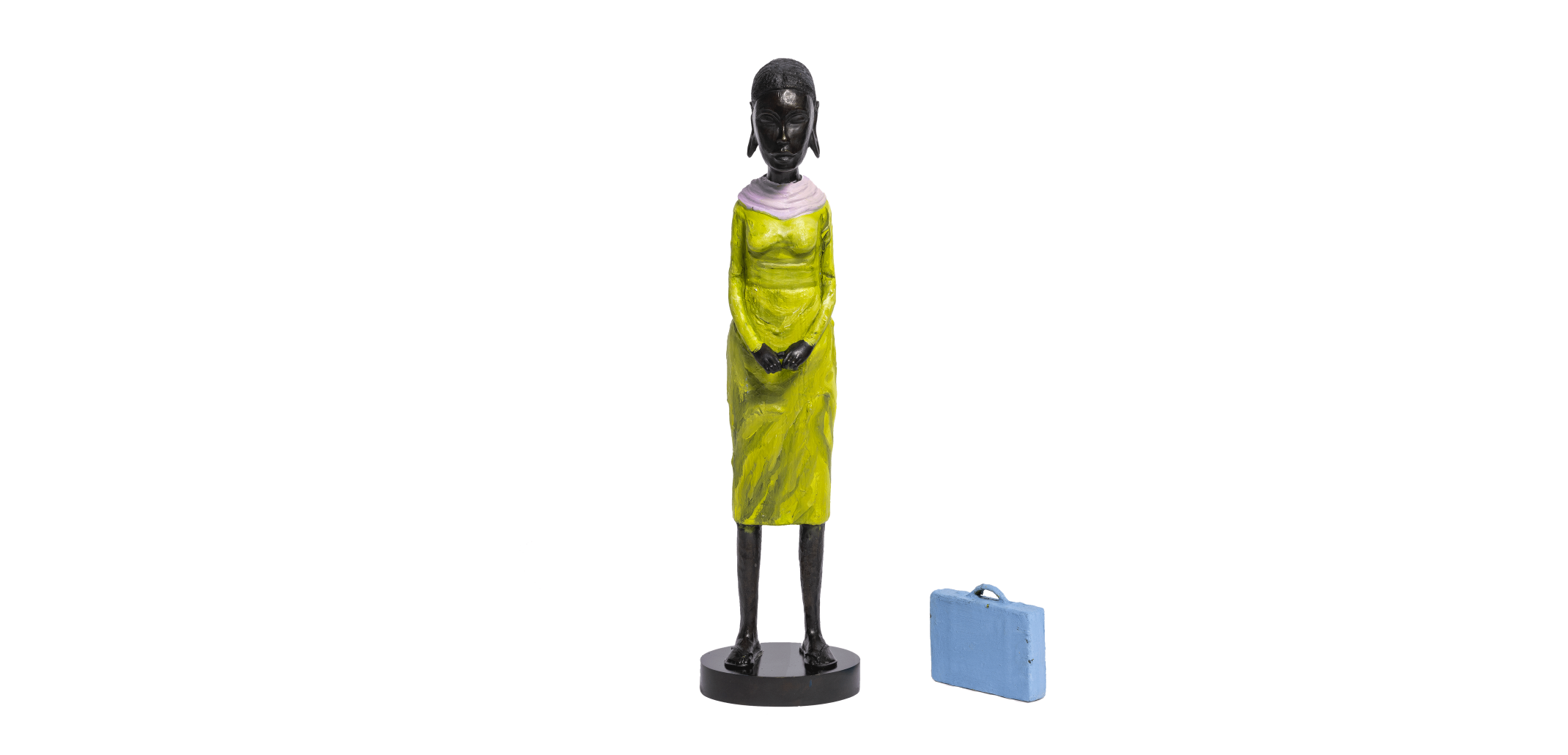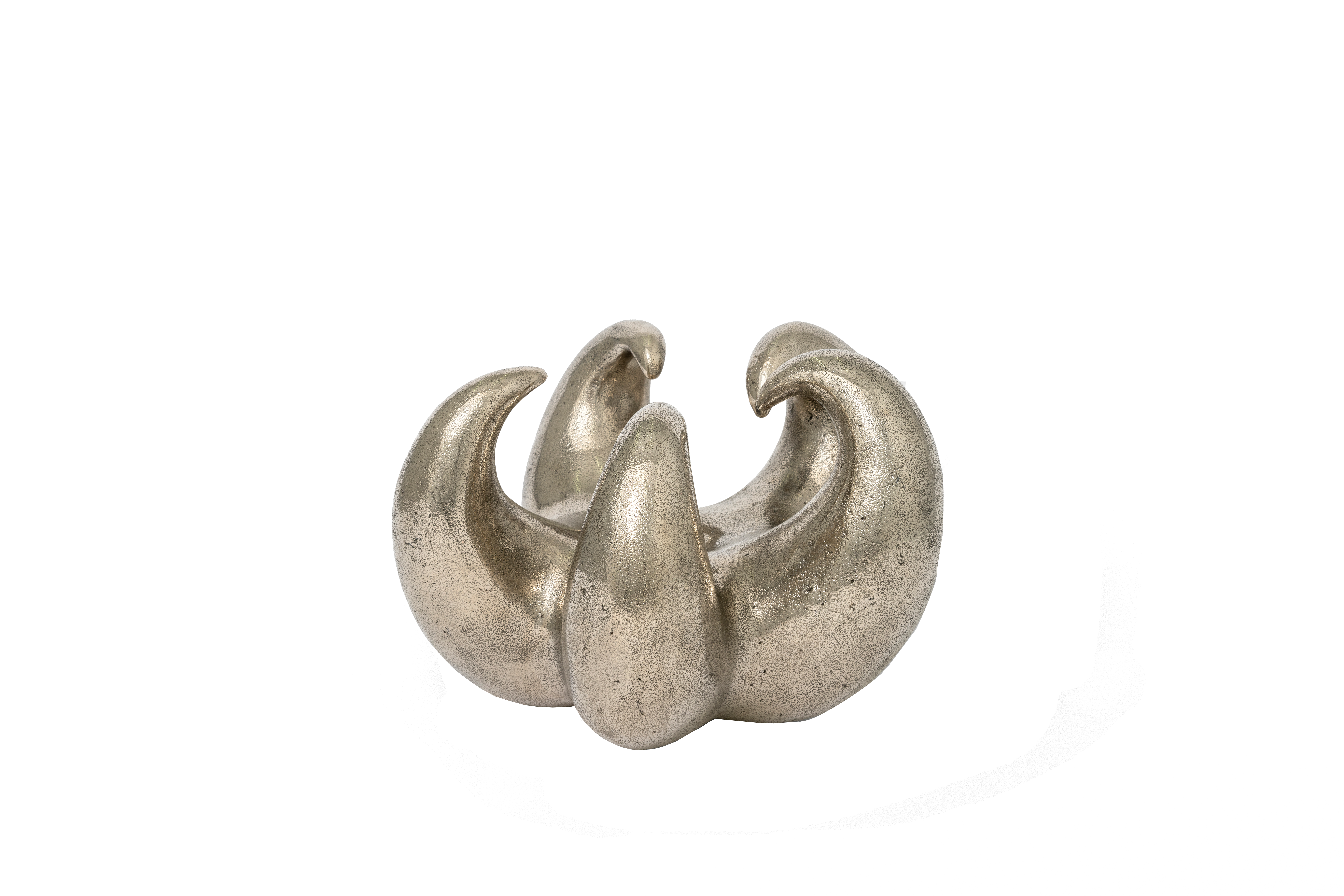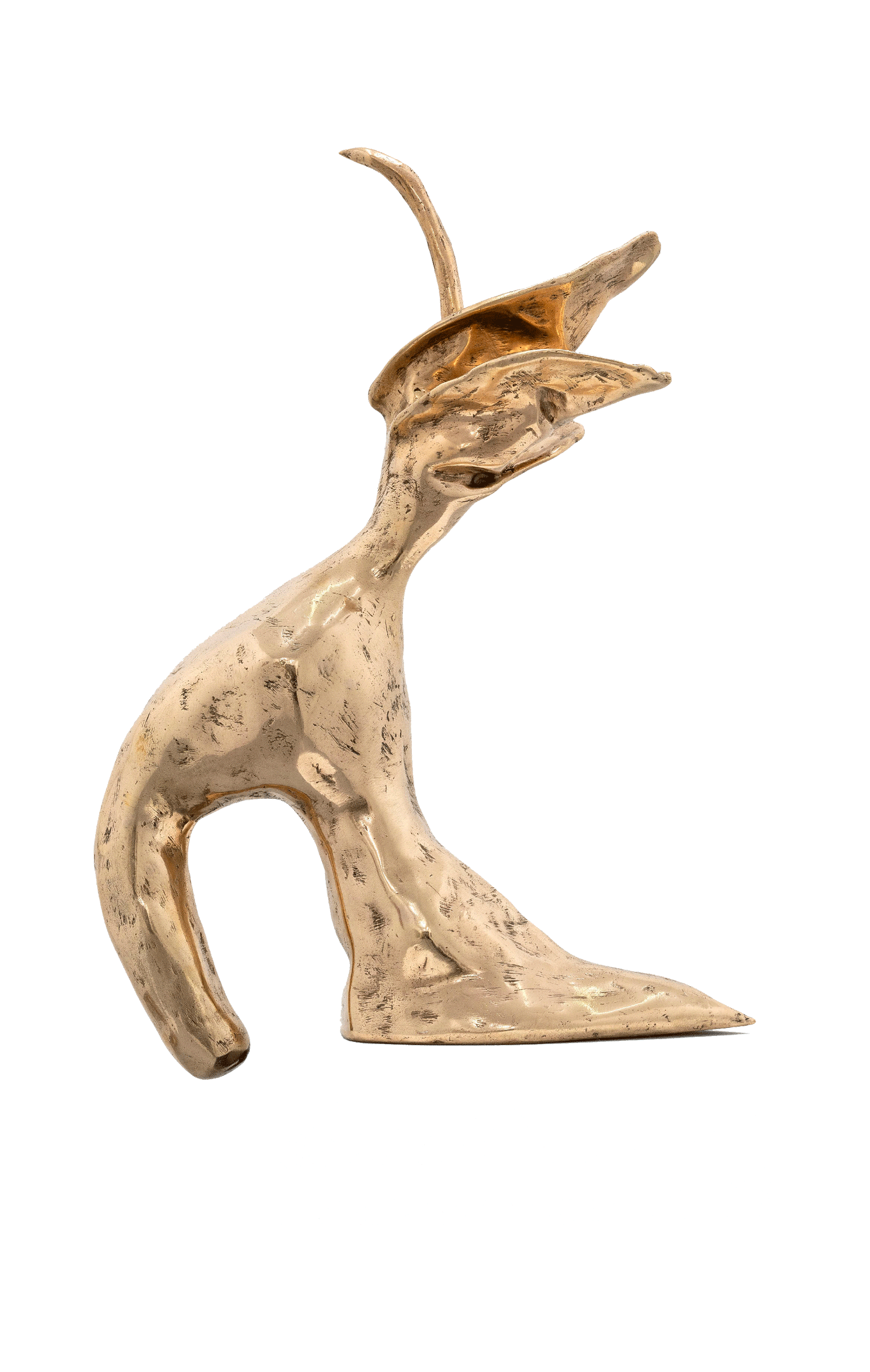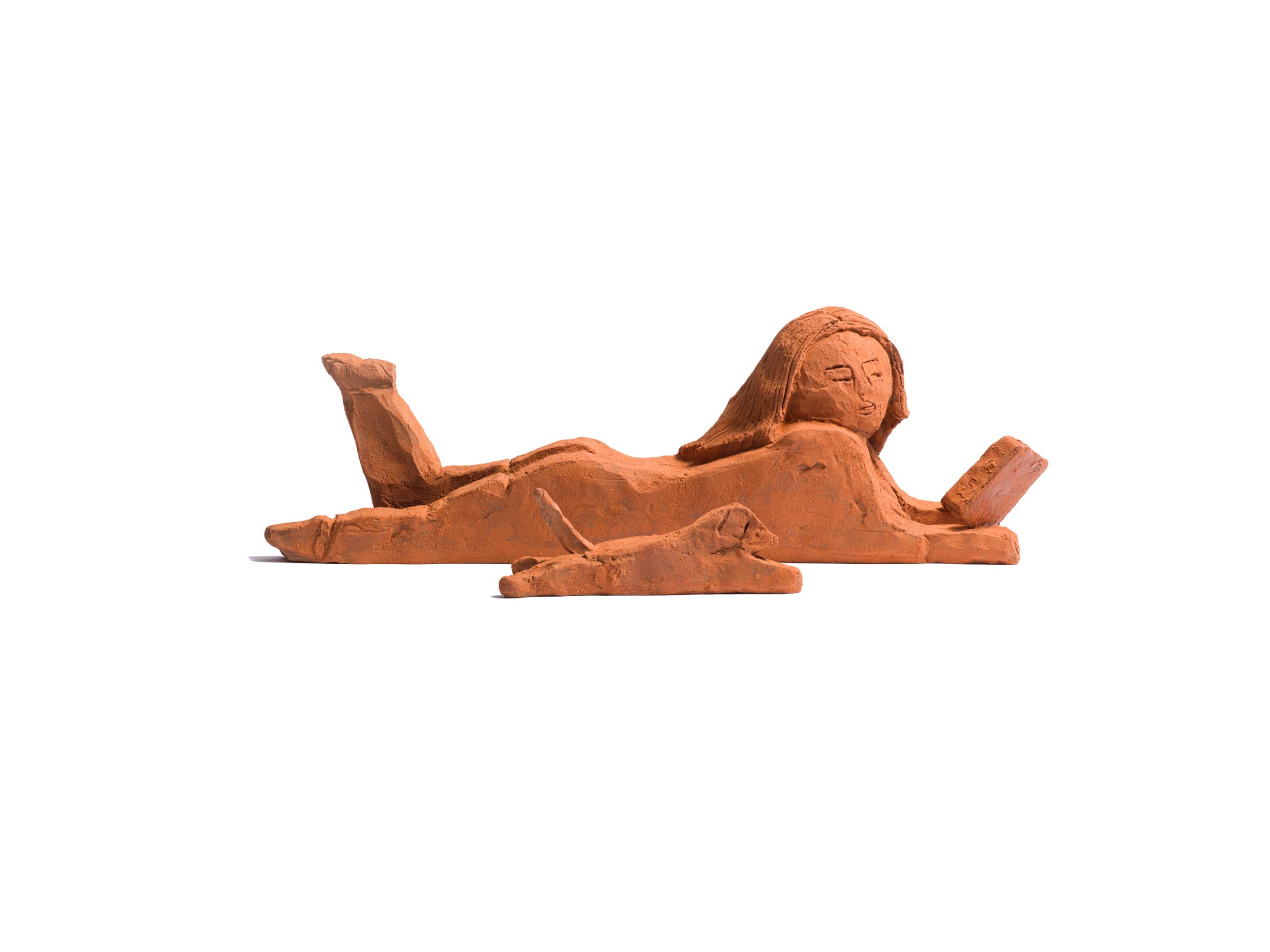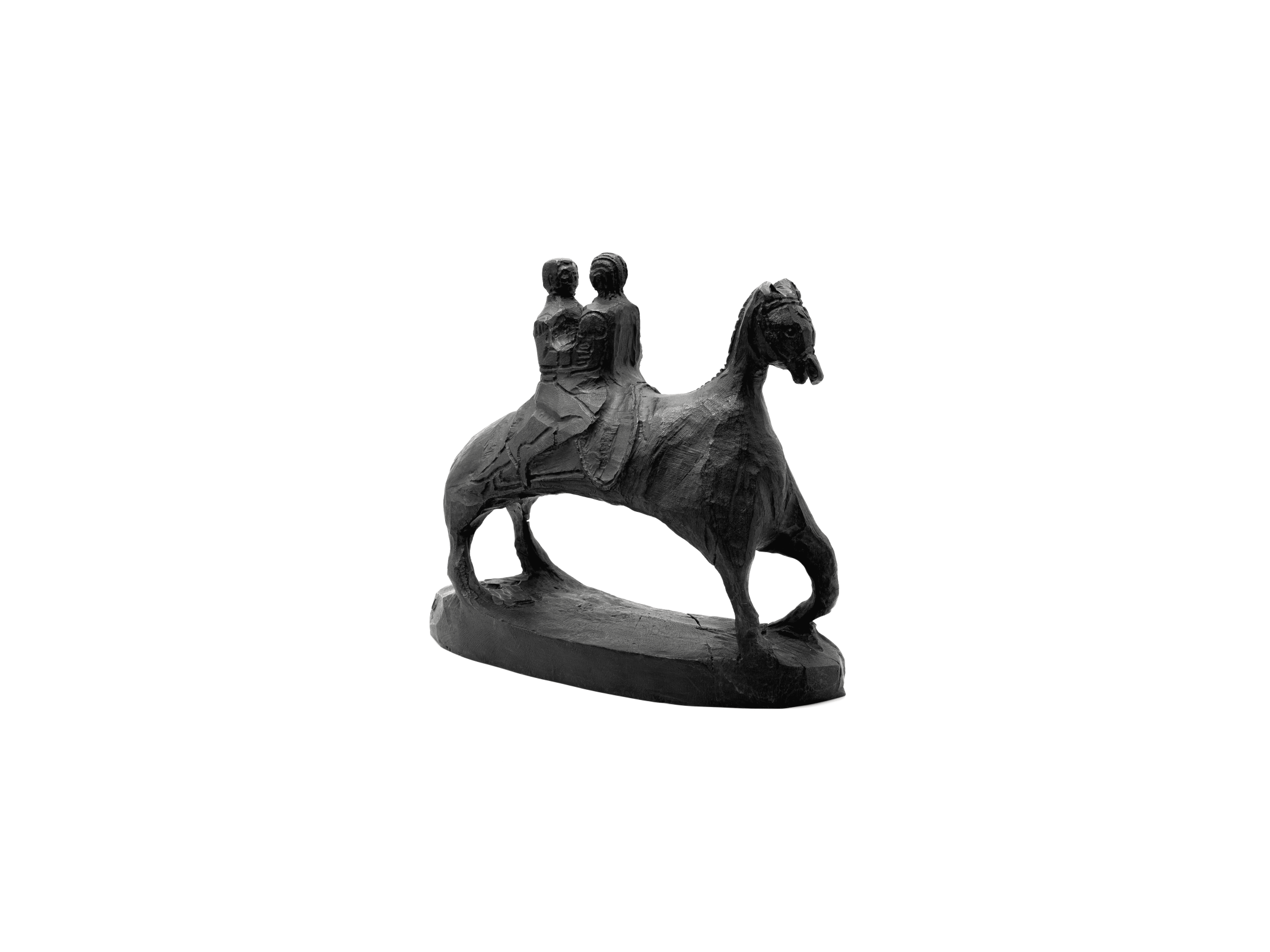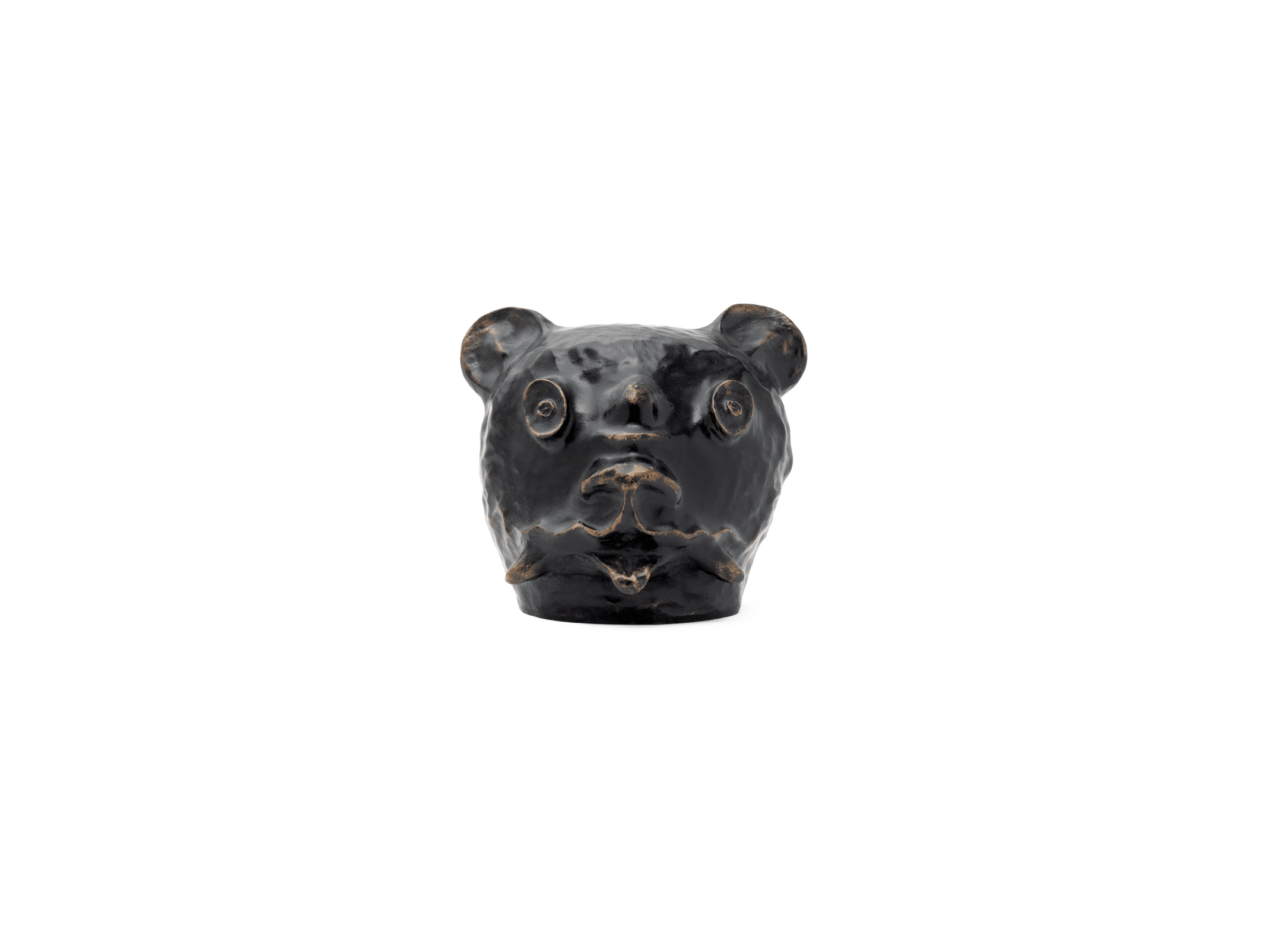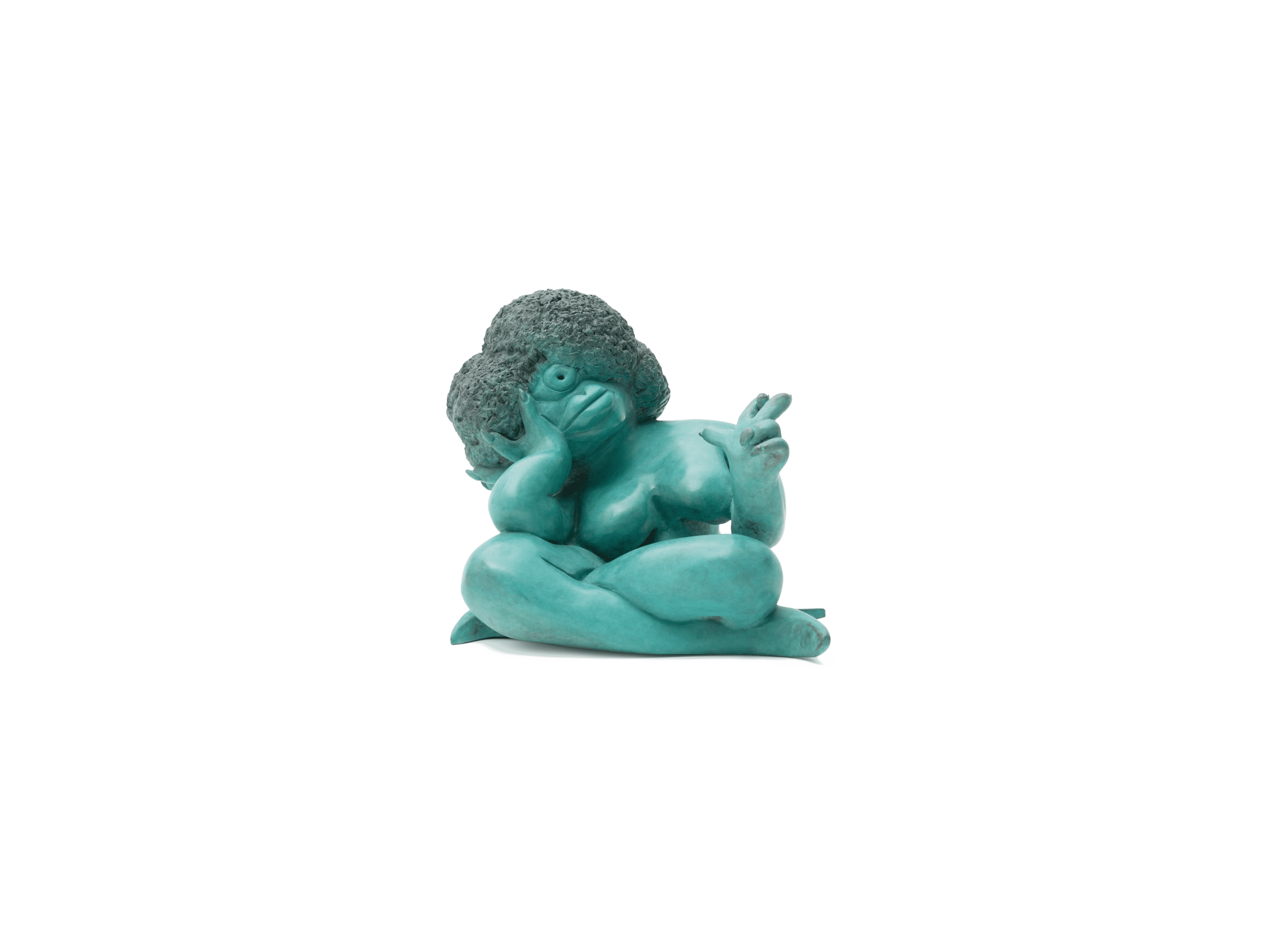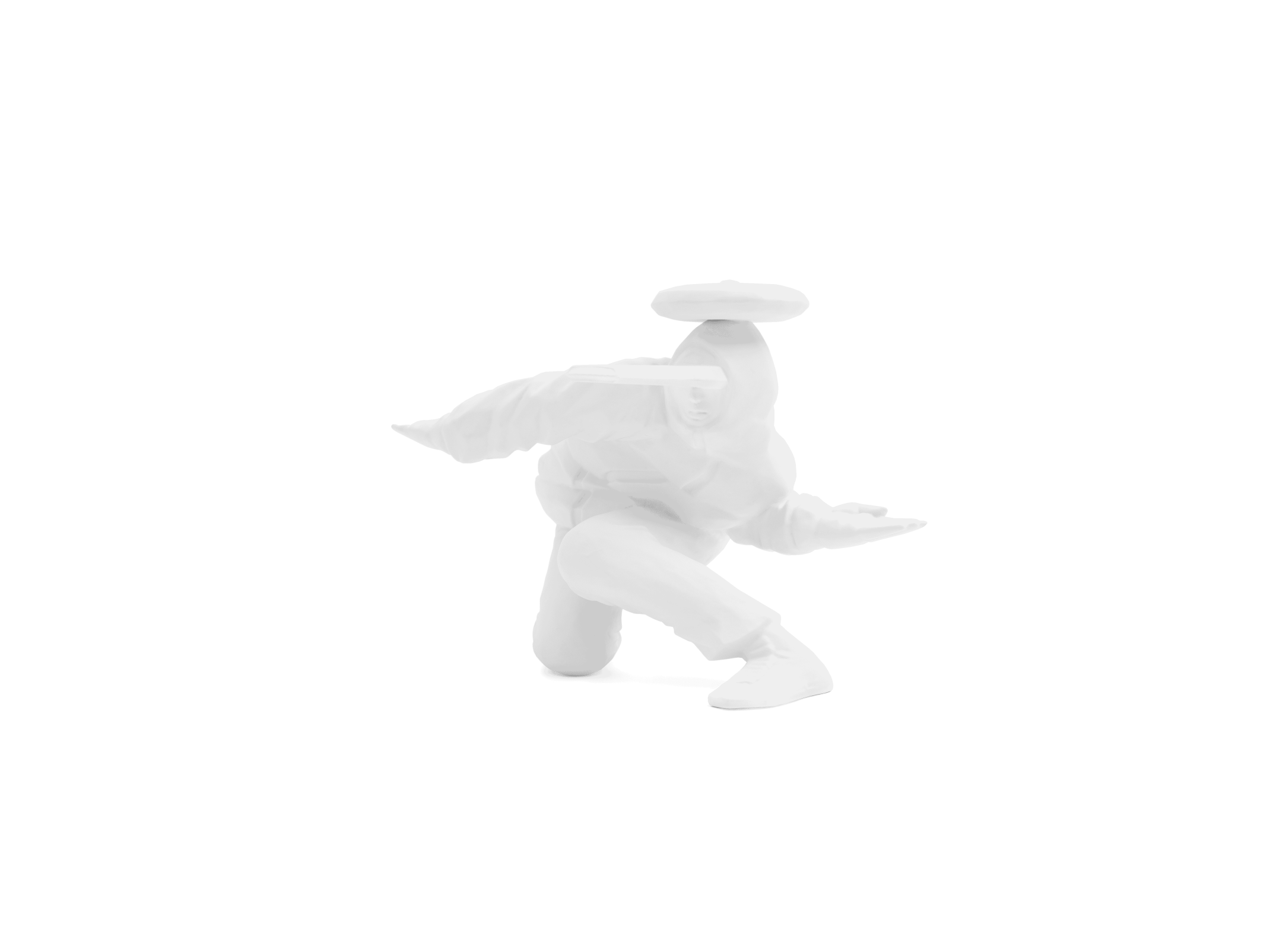Hein Koh was born in 1976 in Jersey City, NJ and lives and works in Brooklyn, NY. After a ten-year hiatus during which she devoted herself fully to sculpture, Hein Koh decided to return to painting out of a need to approach a freer, expressive and emotional creation. It is in this context that she created the broccoli woman, an evolution inspired by her sculpture “Eat Me” made in 2019. This new body of work, orchestrated around oil paint and charcoal, allows her to develop the psyche of these protagonists and create a framework around their existence. Broccoli and carrots, self-portraits to a certain extent, become the artist’s main and recurring subjects. Healthy vegetables par excellence, they are the allegory of an imposed ideal: to be a good wife, a good mother, a good artist. Hein Koh wished to free her subjects from this insatiable quest for perfection, from the expectations of our society and from the dictates imposed on women: her characters are free to be whoever they want to be and do not fit into any box, celebrating femininity, the liberation of body and mind.
-
2004
Yale University School of Art, New Haven, CT M.F.A. in Painting/Printmaking, United States
-
1998
Dartmouth College, Hanover, NH B.A. in Studio Art, Concentration in Painting B.A. in Psychology, United States
-
2022
“On the edge of a precipice”, Anton Kern Gallery, New York, United States
-
2021
“Can’t help myself”, Allouche Benias Gallery, Athens, Greece
-
2021
“Hope and Sorrow”, SCAD Museum of Art, Savannah, Georgia, United States
-
2021
“Not So Healthy”, Semiose Gallery, Paris, France
-
2021
“WINDOW”, Anton Kern Gallery, New York, United States
-
2019
“31 Flavors”, Tennis Elbow at The Journal Gallery, New York, United States
-
2019
“Braving the Cold”, Rockefeller Center, in partnership with the Art Production Fund, New York, United States
-
2018
“Splendor in the Grass”, Marvin Gardens, Ridgewood, United States
-
2017
“Joy and Pain”, Platform Gallery, Baltimore, United States
-
2016
“Hein Koh and Fredman Barahona”, Beverly’s, New York, United States
-
2023
“Don’t Dive a Damns 2”, Volery Gallery, Dubaï, United Arab Emirates
-
2023
“Solidarity”, Nexx Asia, Taipei, Taiwan
-
2021
“Hungry for Time”, An Invitation to Epistemic Disobediance with the Collections of the Academy of Fine Arts Vienna, curated by Raqs Media Collective, Academy of Fine Arts Museum, Vienna, Austria
-
2021
“Universes”, curated by Sasha Bogojev, Galerie Droste, Paris, France
-
2021
“London’s Burning”, Ramp Gallery, London, United Kingdom
-
2021
“Future Planets”, curated by James Williams, Longwood Center for the Visual Arts, Farmville, United States
-
2021
“Lighter”, curated by Ryan Travis Christian, Western Exhibitions, Chicago, United States
-
2021
“Fairyland”, Mindy Solomon Gallery, Miami, United States (catalog)
-
2021
“11”, Anton Kern Gallery, New York, United States
-
2020
“Good Pictures”, curated by Austin Lee, Jeffery Deitch Gallery, New York, United States
-
2020
“Dallas Art Fair”, group booth with Carl Kostyál Gallery, Dallas, United States (online)
-
2020
“Felix Art Fair”, group booth with Carl Kostyál Gallery, Los Angeles, United States
-
2020
“American Woman”, Allouche Benias Gallery, Athens, Greece (catalog)
-
2019
“Horology”, Jack Hanley Gallery, New York, United States
-
2019
“The Garden”, Shrine and Sargent’s Daughters, New York, United States
-
2019
“Home Work”, JDJ, Garrison, United States
-
2018
“Holding Tight“, curated by Mark Joshua Epstein, Woskob Family Gallery, Penn State University, University Park, United States
-
2018
“Psychedelic Pizza Parlour“, curated by RJ Supa, Museum of Pizza, The William Vale Hotel, Brooklyn, United States
-
2018
“Through Her Eye”, Mana Contemporary, Chicago, United States
-
2018
“Morir Soñando”, curated by Alex Santana, The Knockdown Center, Maspeth, United States
-
2018
“A Rose is a Rose is a Rose”, curated by LouisFrancetino and Nikki Maloof, Jack Hanley Gallery, New York, United States
-
2018
“Seed”, curated by Yvonne Force Villareal, Paul Kasmin Gallery, New York, United States
-
2018
“Metaxis Uber Pool”, HILDE Gallery in collaboration with Tienda X Gallery, Houston, United States
-
2018
“#FFFFFFIGURATION”, curated by Jonathan Chapline, Nevven Gallery, Gothenburg, Sweden
-
2017
“Sitting Still”, BravinLee Programs, New York, United States
-
2017
“Press One For Show”, curated by Robert Otto Epstein, Lorimoto Gallery, Queens, United States
-
2017
“Drawer”, curated by FlatFile, Deli Gallery, Long Island City, United States
-
2017
“The Cactus Show”, curated by Dan Gratz and Letha Wilson, 1124 County Route 27, Craryville, United States
-
2017
“A Step By Step Guide to Using Humor as a Coping Mechanism“, curated by Brooke Wise, Public Arts, New York, United States
-
2017
“One Night Stand”, curated by Ryan Michael Ford and Brigitte Mulholland, W Hotel, New York, United States
-
2017
“All My Life”, curated by Jonathan Dedecker, YUI Gallery, New York, United States
-
2017
“Fantastic Plastic”, curated by Jaqueline Cedar, Crush Curatorial, New York, United States
-
2017
“Dogs”, curated by Oliver Clegg and Austin Lee, Raymond Duck, Brooklyn, United States
-
2017
“BAM Presents: The Alan Gala”, (with Beverly’s) Brooklyn Academy of Music, Peter Jay Sharp Building, Brooklyn, United States
-
2017
“No Vacancy II”, curated by Alt Esc, 929 Broadway, Brooklyn, United States
-
2017
“The Pursuit of It”, curated by Nicole Grammatico and Christina Papanicolaou, Spring/Break Art Show, New York, United States
-
2017
“The Human Form”, curated by Michael Holden and Peter Schenck, Park Place Gallery, Brooklyn, United States
-
2017
“Successive Excessive”, curated by Chris Bors and Fred Fleisher, The Parlour Bushwick, Brooklyn, United States
-
2017
“Nasty Women”, organized by Jessamyn Fiore and Roxanne Jackson, The Knockdown Center, Maspeth, United States
-
2016
“Habitat For Appetite: Emre Kocagil, Hein Koh, Amanda Martinez”, Selena Gallery, Brooklyn, United States
-
2016
“Impossible Possible”, curated by Jay Davis, Memorial Sloan-Kettering Cancer Center, Brooklyn Infusion Center Gallery, Brooklyn, United States
-
2016
“Room With A View”, Eddy’s Room, Brooklyn, United States
-
2016
“VERBLIST”, curated by Mark Joshua Epstein, E.Tay Gallery, New York, United States
-
2016
“LIFEFORCE“, curated by Kelsey and Remy Bennett, The Untitled Space, New York, United States
-
2016
“Or Bust, Honey Ramka”, Brooklyn, United States
-
2016
“Repeat Pressure Until”, curated by Sheilah Wilson, Ortega Y Gasset Projects, Brooklyn, United States; traveling to Angela Melica Gallery, Columbus, Ohio in fall of 2017
-
2016
“Onion By The Ocean”, curated by Essye Klempner and Elisa Soliven, Underdonk, Brooklyn, United States
-
2016
“Equinox”, curated by Sharona Eliassaf and Emily Weiner, The Willows, Brooklyn, United States
-
2016
“Bodies”, curated by Ilse Murdock, Perimeter Gallery, Belfast, United Kingdom
-
2015
“12 × 12 × 12”, Black Ball Projects, Brooklyn, United States
-
2015
“Paul Klee”, curated by Ashley Garrett and JJ Manford, Underdonk, Brooklyn, United States
-
2015
“Color Against Color”, curated by Eric Hibit, Ortega y Gasset Projects, Brooklyn, United States
-
2015
“Weaving Time: An Exhibition from The Archive of Korean Artists in America, Part 3, 2001—2013”, organized by the AHL Foundation and Korean Cultural Service of United States, Gallery Korea of the Korean Cultural Service United States, New York, United States (catalog)
-
2015
“Seducers”, curated by Evie Falci, Greenpoint Terminal Gallery, Brooklyn, United States
-
2014
“The New Bitch”, curated by Michele Basora, Gitana Rosa Gallery, New York, United States
-
2014
“Summer Exhibition 2014”, Munch Gallery, New York, United States
-
2014
“No Laughing Psychedelic Matter”, curated by Alexa Mendez, Greenwich House Music School, New York, United States
-
2014
“Shrink It, Pink It”, curated by Diana Buckley and Irena Jurek, Cathouse FUNeral, Brooklyn, United States
-
2013
“Location, Location, Location: An Exhibition Trilogy Curated by President Clinton Projects”, Location One: A Residential Apartment in DUMBO, Brooklyn, United States
-
2013
“What Is In Our Blood and What Comes From Experience?”, curated by Jong Il Ma, Gallery Korea of the Korean Cultural Service United States, New York, United States (catalog)
-
2013
“Digital Dye Hard”, organized by Leeza Meksin, Ortega y Gasset Projects, Ridgewood, United States
-
2013
“No Kineme Stands Alone”, curated byFrancen Holstrom and Saira McLaren, 106 Green, Brooklyn, United States
-
2013
“Hello Nasty”, curated by Chris Bors, Cindy Rucker Gallery, New York, United States
-
2012
“If You Think I’m Sexy”, curated by Diana Buckley and Irena Jurek, Chashama 461 Gallery, New York, United States
-
2012
“First Contact”, curated by Jacob Rhodes, Field Projects Gallery, New York, United States
-
2012
“I Choo Choo Choose You”, Wayfarers Brooklyn, Brooklyn, United States
-
2011
“Bronx Calling, The 1st AIM Biennial”, curated by Wayne Northcross and Jose Ruiz, The Bronx Museum of the Arts and Wave Hill, Bronx, United States (catalog)
-
2011
“:)”, curated by Francen Holstrom and Carolyn Salas, Casita Maria Center for the Arts and Education, Bronx, United States
-
2010
“Fragments”, curated by Meenakshi Thirukode, Parlour No. 17, Staten Island, United States
-
2010
“Irrelevant: Local Emerging Asian Artists Who Don’t Make Work About Being Asian”, curated by Joann Kim and Lesley Sheng, Arario Gallery, New York, United States
-
2010
“Urban Shaman”, curated by Julie Kirkpatrick, Fun Times Gallery, Brooklyn, United States
-
2009
“Lucullan Feast”, curated by Andrea Hill, Gallery MC, New York, United States
-
2009
“Life Goes On“, curated by Colleen Asper and Ted Mineo, Parlour No. 5, Brooklyn, United States
-
2008
“Art Taipei”, Taipei, Taiwan (catalog)
-
2008
“Grandma”, curated by Ann Toebbe, Aftermodern Gallery, San Francisco, traveled to Brooklyn Fire Proof, Brooklyn, United States
-
2004
“Junto”, curated by Brendan Greaves, William Pym, and Jina Valentine, Fleisher/Ollman Gallery, Philadelphia, United States
-
2004
“Laying Doggo”, curated by Ann Toebbe, Brooklyn Fire Proof, Brooklyn, United States
-
2004
“MFA Thesis Exhibition”, Yale University School of Art Gallery, New Haven, United States
-
2022
“Reclining Carrot’”, bronze sculpture, Avant Arte, France
-
2022
“Sitting Carrot, Smoking’”, bronze sculpture, Anton Kern, New York, United States
-
2021
“Thinking, Reflecting”, bronze sculpture, Bomma, France
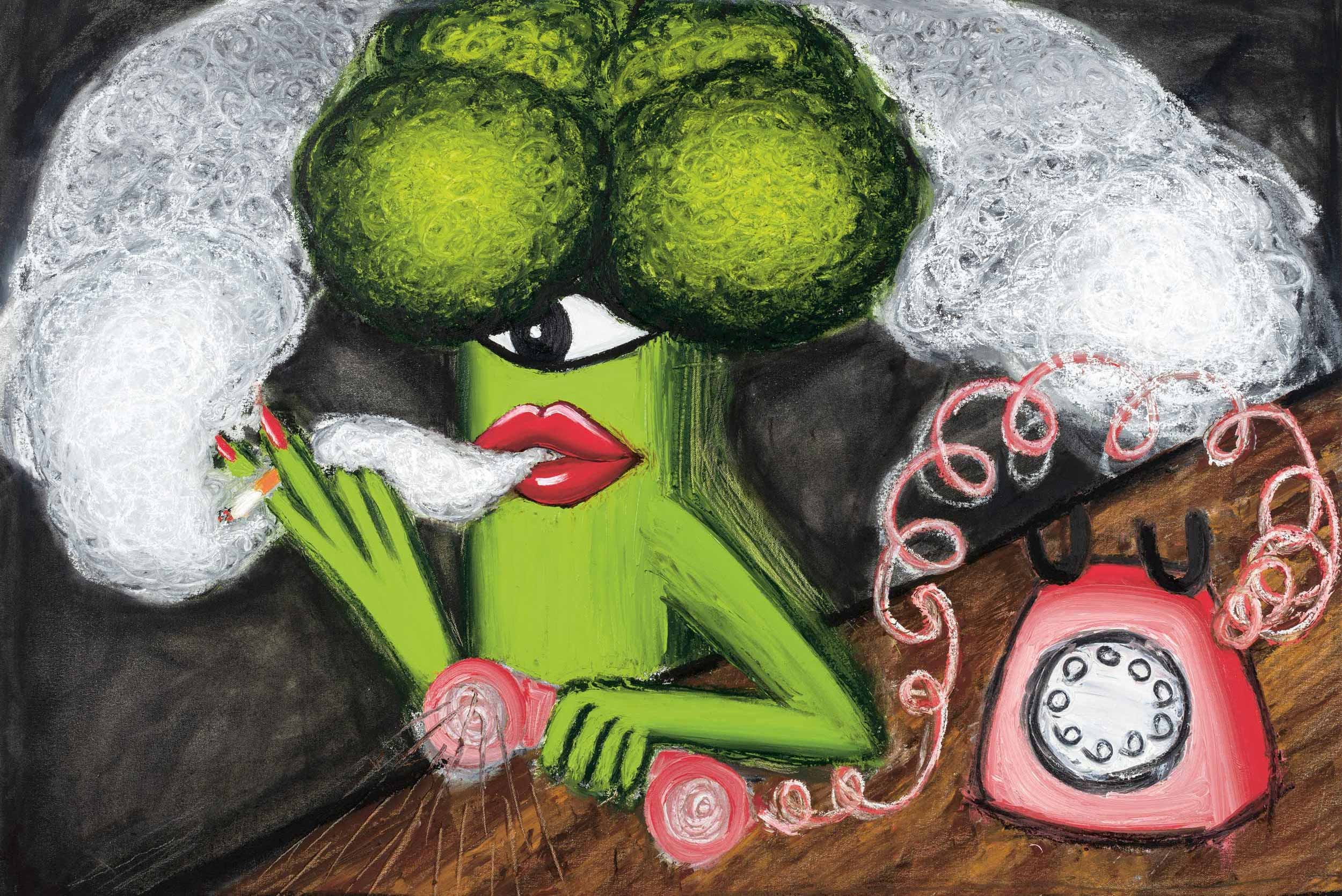
Checked Out, charcoal, oil and oil stick on canvas, 86,36 × 127 cm, 2020, photo: Alex Yudzon, courtesy of Hein Koh, Semiose and Anton Kern
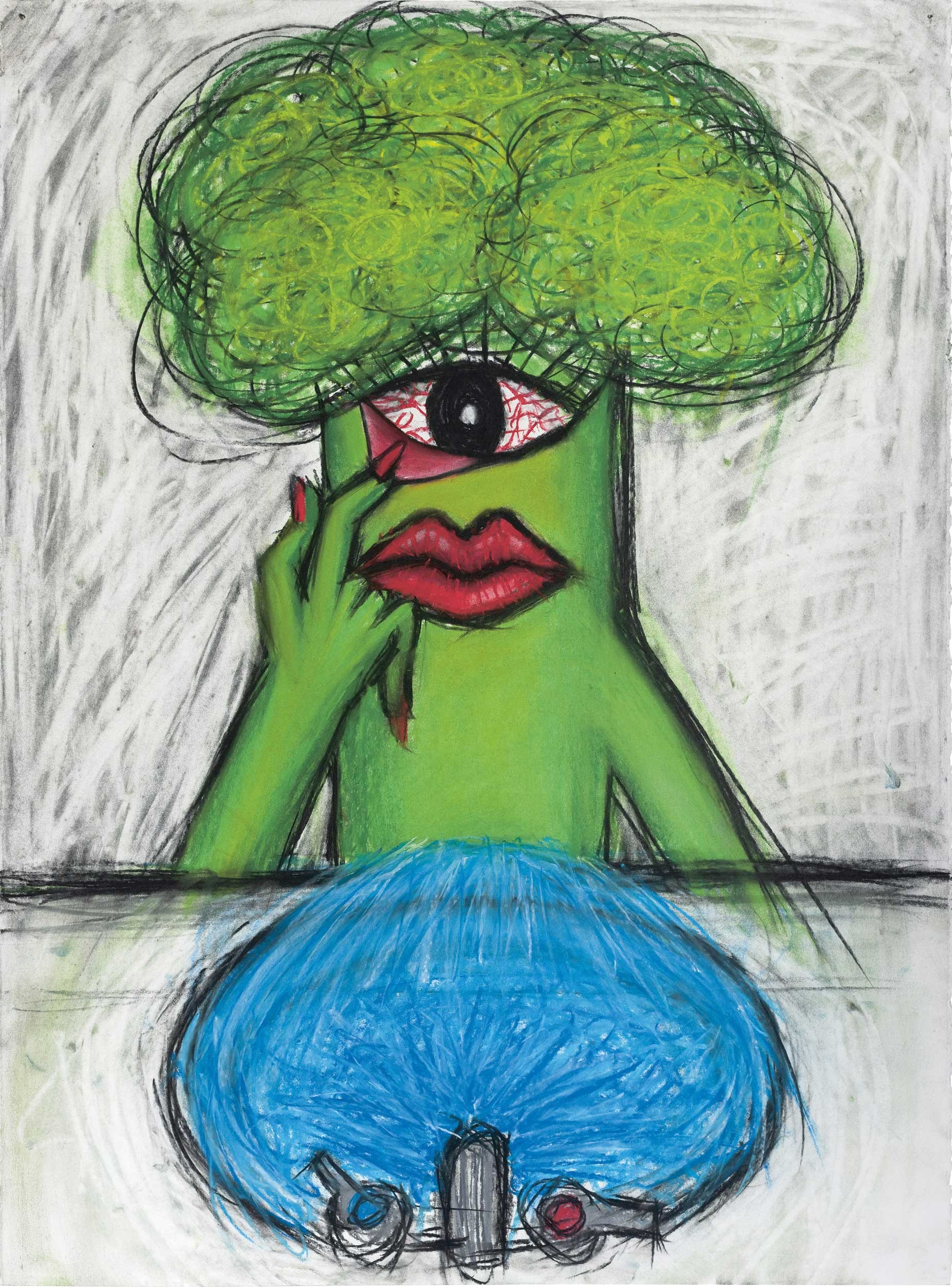
Examining, charcoal and pastel on paper, 55,88 × 76,20 cm, 2020, photo: Alex Yudzon, courtesy of Hein Koh, Semiose and Anton Kern

Tree of Life, charcoal and pastel on paper, 55,88 × 76,20 cm, 2021, photo: Alex Yudzon, courtesy of Hein Koh, Semiose and Anton Kern

Group Chat with Austin and Lou, oil on canvas, 76,20 × 101,6 cm, 2020, photo: Alex Yudzon, courtesy of Hein Koh, Semiose and Anton Kern
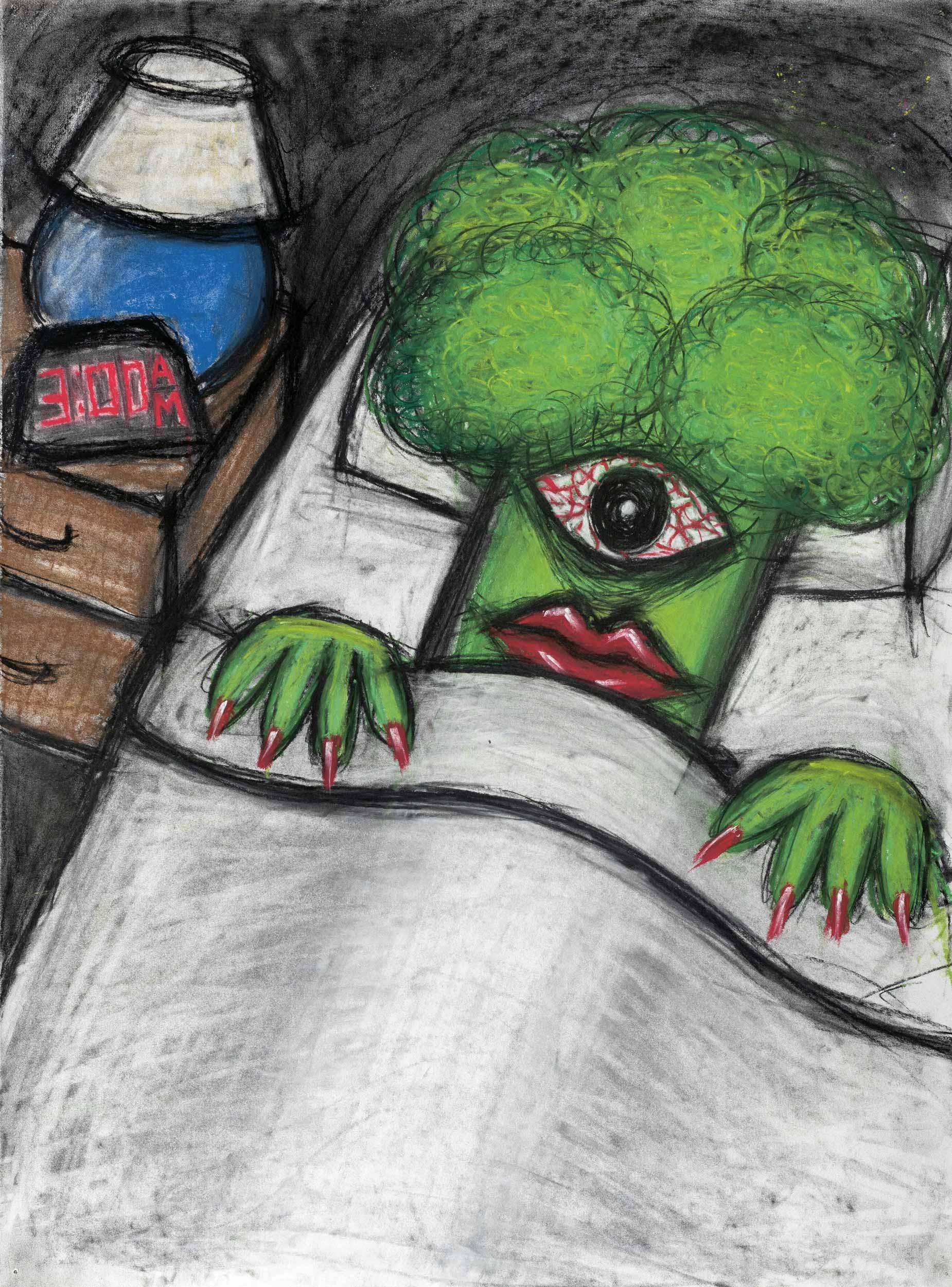
It’s 3 A.M… Again, charcoal and pastel on paper, 55,88 × 76,20 cm, 2020-2021, photo: Alex Yudzon, courtesy of Hein Koh, Semiose and Anton Kern

Raining, Smoking, charcoal, oil and oil stick on canvas, 96,52 × 157,48 cm, 2021, photo: Alex Yudzon, courtesy of Hein Koh, Semiose and Anton Kern
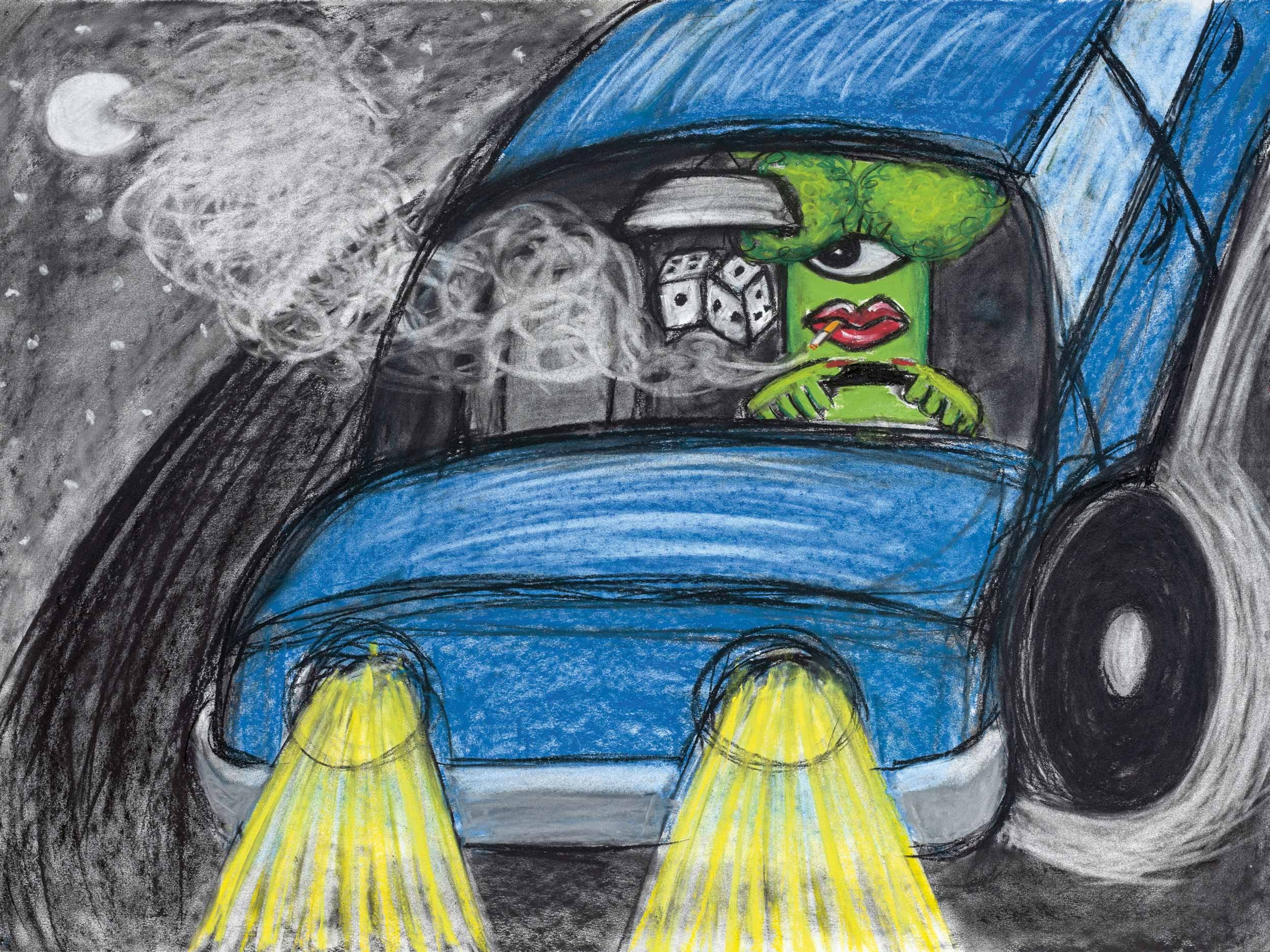
Night Drive, charcoal and pastel on paper, 55,88 × 76,20 cm, 2021, photo: Alex Yudzon, courtesy of Hein Koh, Semiose and Anton Kern

Smoke Ring For My Halo (After Kurt), charcoal and pastel on paper, 55,88 × 76,20 cm, 2021, photo: Alex Yudzon, courtesy of Hein Koh, Semiose and Anton Kern
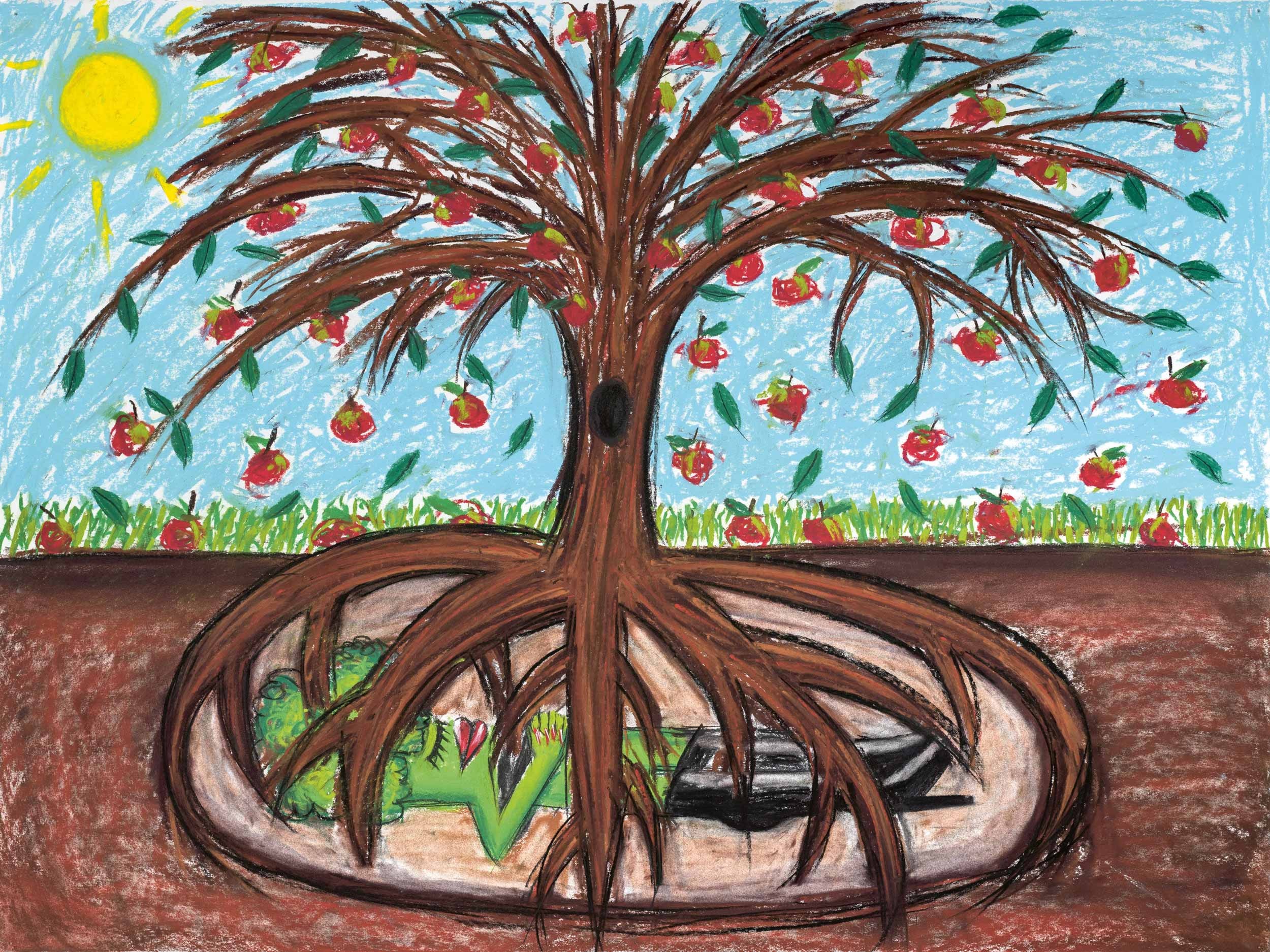
Tree of Life, charcoal and pastel on paper, 55,88 × 76,20 cm, 2021, photo: Alex Yudzon, courtesy of Hein Koh, Semiose and Anton Kern
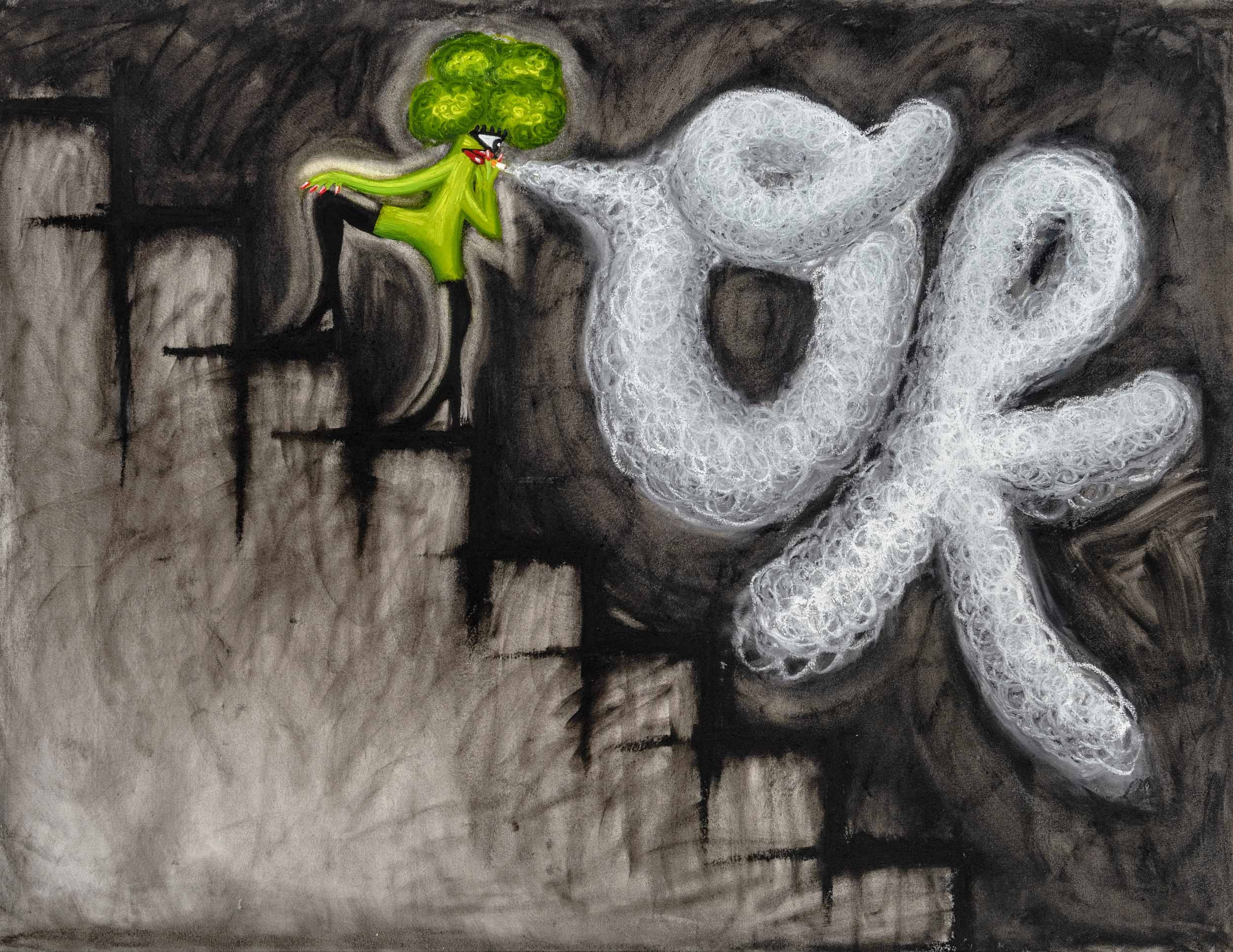
It’s OK, oil and oil stick on canvas, 137,2 × 177,8 cm, 2021, photo: Alex Yudzon, Courtesy of Hein Koh, Semiose and Anton Kern
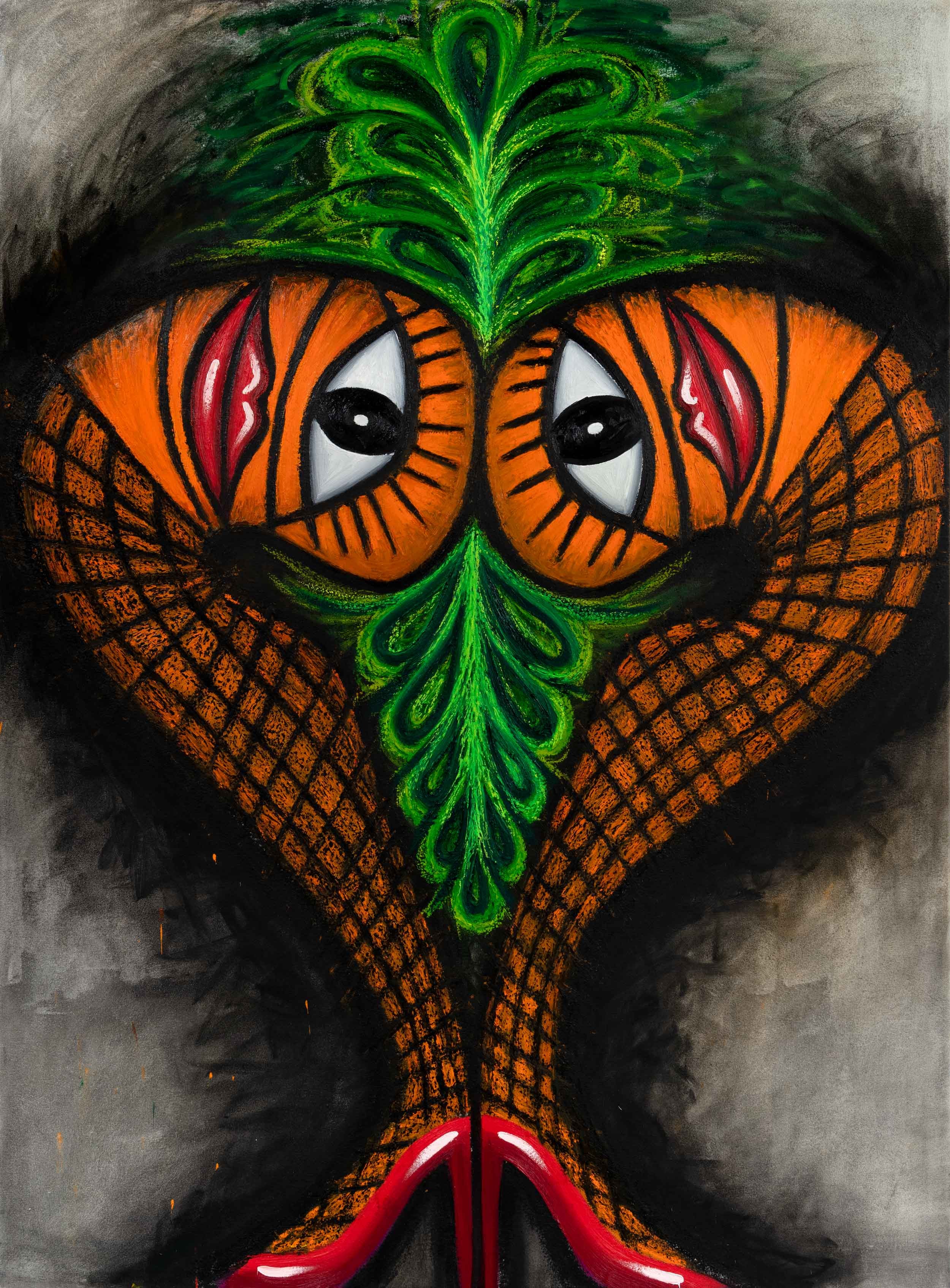
Uterine Carrots, oil and oil stick on canvas, 129,5 × 175,3 cm, 2021, photo: Alex Yudzon, courtesy of Hein Koh, Semiose and Anton Kern
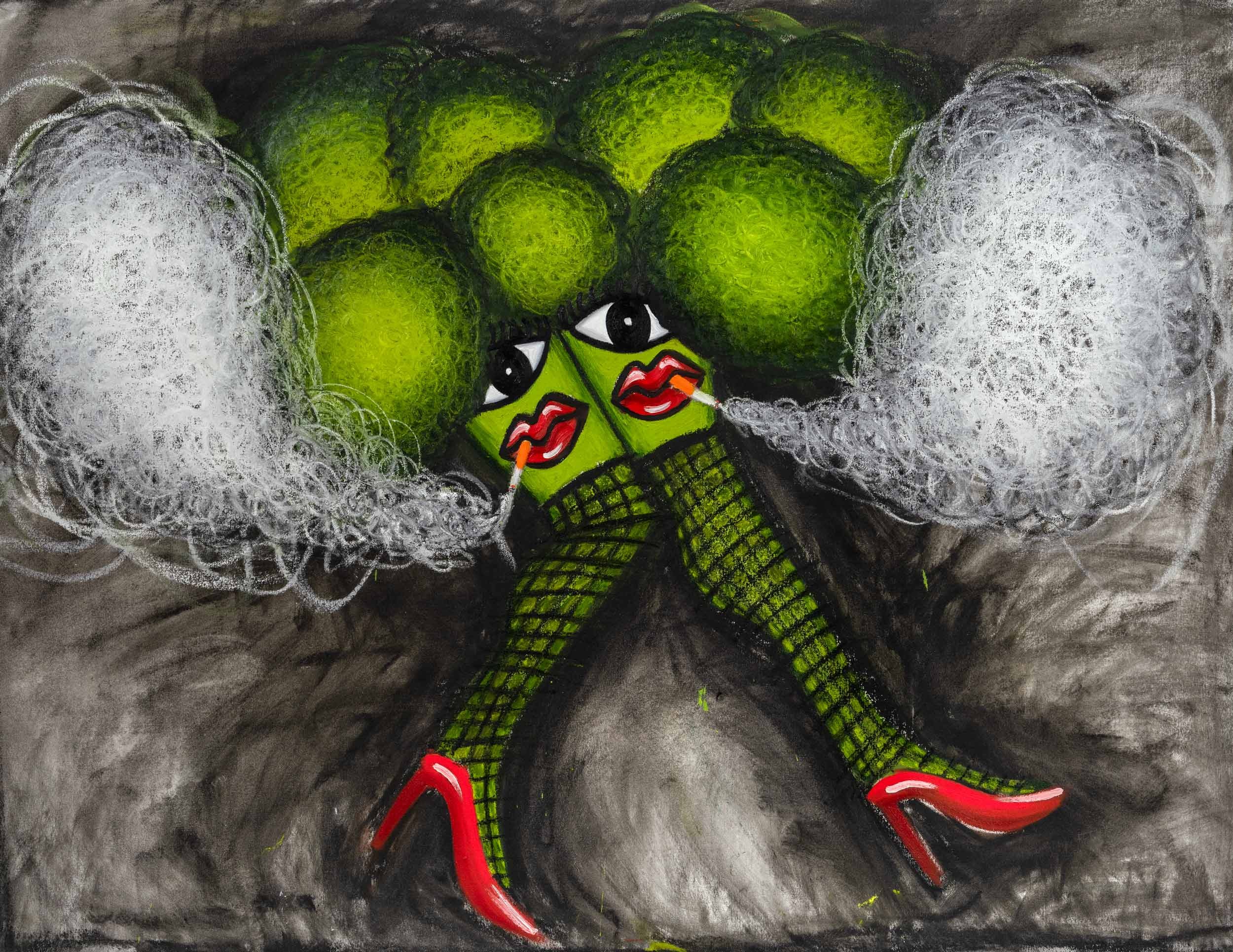
Sexy, Smokin’, Walkin Broccoli”, oil and oil stick on canvas, 157,48 × 203,20 cm, 2021, photo: Alex Yudzon, courtesy of Hein Koh, Semiose and Anton Kern
Hein, Louis and Austin conducted the interview over a period of a couple of weeks on Google Docs, and finally finished the last bit in person on Hein’s computer, over pizza and wine.
Hein Koh: First of all, I want to say I asked you guys to interview me because I really enjoy our daily group chats about art and our daily lives which started sometime during the pandemic. They honestly helped me cope during a difficult time, and I have often thought they were so good that they should be published, but maybe we are just cracking ourselves up. Also, you guys were there from the beginning of my transition from sculpture to painting, also during the pandemic, and were very helpful and encouraging. You have witnessed and been a part of the evolution of my broccoli woman’s world in painting, and through her I am reconnecting with sculpture again, with this edition. I feel our frequent mini-crits over text have become integral to my practice. So I see this interview as a natural extension of that.
Yes! Usually I hate looking at my phone, or feel guilty about it, but I think having you guys in my pocket during the worst parts of the pandemic was really helpful. You guys talked me off the ledge destroying some works that I’m glad I didn’t. Hein, it feels like you’ve been painting forever, but also our first conversations about trying painting out feels like yesterday. I remember showing you Rainer Fetting’s work to try to get you to get real sloppy and juicy with the paint, and I think you impressed Austin and I both with your really fast pivot into a new language. I feel like you let go of a kind of meticulousness that defined the labor of your soft sculpture practice, and really embraced a very energetic, looser, more atmospheric way of making an image which has brought them into new emotional territory.
Ha I still feel guilty about spending too much time on my phone, but our group chats have definitely served as necessary therapy at times or intellectual stimulation at other times. Plus, we do make each other laugh which really brightens up my day. It’s actually a good means for artists to connect, since we’re isolated in our studios all day every day. It can get lonely! I’m glad we kept you from destroying some of your works, I didn’t realize they were in danger! You’re right, on one hand I feel like I have been painting forever, not in terms of skill but in terms of my relationship to it, but on the other hand it feels like yesterday that I was texting you guys my new forays into painting and asking you what you thought. Rainer Fetting was a good reference for me! At the time, I was working with acrylics and both you and Austin, independently of each other, though I should give oils a try. Austin didn’t like the acrylic paintings I was doing with a lot of drips. I appreciated his frankness! I took both of your advice seriously and I left my studio and bought oils that same day! Acrylic made sense to me because of the bright colors and quick-drying, which seemed more my speed, but when I started working with oils, they gave me more freedom by allowing me to get very messy and dirty and let go of that meticulousness you mentioned. That’s what I was trying to get away from by switching from sculpture to painting, after a ten year hiatus from painting, and oils just felt right to me. In the past, I have used both oil and acrylics, but I am using oils in a much looser way than I did in the past, when I tried to control the paint more.
Experiencing some really dark and fraught feelings this past year, I felt I needed to paint and draw in order to process my emotions. My sculpture wasn’t the right outlet for it. So you’re right, my new looser and more energetic way of working is definitely bringing the work into new emotional territory. It excites me, because I feel it is a never ending reservoir of inspiration and my practice feels urgent because it is a source of therapy for me.
I’ve been so happy to see you return to flatter works. I always loved your drawings! Anyway, one question I have is about how you developed your visual language of anthropomorphic creatures. How did you find yourself in that path versus directly depicting the figure?
Thanks, I remember you were very encouraging of the drawings I was doing right after I had kids! To answer your question, there was a time when I painted the figure directly, when I made narrative self-portraits in undergrad. However, sometime after I graduated I became interested in depicting animals with my and Jim’s (my then boyfriend now husband) faces on them. I was interested in the metaphorical relationships of animals to depict my own relationship, and years later I’m still interested in metaphor. I’ve worked with a number of different characters over the years, including our cats and a character I called “stickman,” but it wasn’t until after I had kids that I became interested in the anthropomorphic creatures that I’ve been working with lately, namely flowers and food, and most recently, the character of a “broccoli woman”. Before the kids were born, I was making abstract sculptures that referenced the body, but after their birth, I was very influenced by their books, toys and clothing designs. The world of kids is full of anthropomorphic creatures. Sometimes I think about depicting the figure directly, and I might one day, but right now it just feels too direct for me. Maybe it’s because the feelings I am depicting are sometimes very raw and emotional, so I need another layer of a fantastical creature to make it more palatable for me and my audience. I also like the sense of humor it adds, which tends to surface in my work. Humor makes everything palatable and easier to digest. It is a good coping mechanism.
Yeah that makes sense. I tend to steer away from realistic humans also. I like how it opens up more options also. Wondering what Lou’s thoughts are on that since his work is very expressive while maintaining a realistic depiction of people in the work.
I think that painting has not really abandoned its first project which is, what do I perceive? I think my tightrope walker’s approach to naturalism and expressionism comes from wanting to be closer to my perception of things, which included distortion, abstraction, associative thought, and day-dreaming. I’m wondering if it’s the same for you Hein, that there is a degree of “realism” to representing an emotion in the way that you do. Mamma Anderson said that she believes all folk artists think they are realists. I think it’s true of us all.
I think that makes sense in the way I think about your practice and why you paint. For me, the realism (while metaphorical) comes not so much from wanting to communicate my perception of things, but wanting to communicate a feeling in a way that is clear and understandable to others, even a non-art audience. Not only am I interested in universal feelings but also a universal language layered with a “painterliness.” The painterliness is for me, a language I want to explore and evolve in, and the art audience who appreciates the nerdy aspects of paint. I want people to be able to enjoy my work on different levels, but not everyone has to understand the work on every level. I can relate to the realism of folk artists, in that I think many of them aren’t necessarily trying to render things accurately, but prioritizing emotion and experience over conventions of proportion, shading, perspective, etc. I’ve also let a lot of those things fall by the wayside, because I just don’t care about them as much as I care about the emotion. I’m interested in the simplification of communicating ideas and feelings through mark-making or form.
Do you feel like your language as a sculptor has largely driven your language as a painter? What is that exchange like? Do you feel like they need to replicate each other, or do you feel pressure to distinguish your sculptural vs. drawn language?
It has, in the sense that I grew so tired of the laborious and meticulous nature of my sculptures that I want to be completely loose and free in my paintings and drawings! What most people don’t know is that I used to paint more like this when I was in undergrad. I think the pandemic, as well as middle age, has made me want to get in touch with my raw, emotional self that I was more in touch with when I was younger. At least it was evident in my art as well as songs I wrote when I played music. Jim (my husband) is actually very nostalgic about that period of my work. He has seen the oeuvre of my work for twenty five years, since we were best friends and bandmates in college, and feels the work I did in undergrad was my best work, in the sense that it was the most honest and most revealing. He thinks grad school at Yale hurt me in a way, because my work became much more refined and polished as a result of it. I am looking forward to pursuing sculpture again, as I am with this edition, but I plan on pursuing it in a different way than before. My goal is to keep things very loose and free from now on. I broke away from a level of perfectionism that I feel was holding me back before.
Funny, I had the opposite experience at Yale. I was making uptight polished work in the beginning of grad school and was encouraged to loosen up. I think it’s nice to have that range now though. You can move in and out of different modes depending on what you are trying to express. The whole piano instead of just a few keys. I can see that range in your work. Glad to see the perfectionism go away but all that specificity and care-fulness is still there with elegance. I can see the influence of the paintings in some of the clay sculptures you’ve shown me. You’ve mentioned that you and Jim had a band together in the past and I’ve heard some of your old songs which I thought were great. Since you’ve worked in all kinds of different mediums, music, sculpture, painting, drawing, digital drawing, how do you decide what is the best form for the content you are trying to express or is it the other way around and does the form influence the way the content is expressed?
Wow I’d love to see the work you were making in the beginning of grad school! I remember you showed me and Lou some weird self portraits you did, I’m guessing that was from that time period or undergrad?
Those paintings are from undergrad. My earliest work was mostly self portraits. I suppose many of my paintings still are but less literal depictions.
They were pretty hilarious. That’s a good point about range and I’m glad you still see specificity and carefulness despite letting go of what I saw as excessive, or just not necessary, perfectionism. Maybe it was needed at the time, but just not anymore. I like your analogy of a piano. I’m just starting to embrace working in different modes simultaneously, rather than focus on a particular way of working at a time, so I’m still trying to figure out what kind of a practice I want to have now. I know I want my paintings and drawings to be loose and free, but the clay sculptures I have been doing that will be cast in metal are a completely different style of tighter, figurative sculpture. At the moment, it seems they have to be that way but I want them to still have a feeling of looseness even if they are not rendered loosely. I love Dana Schutz’s bronze sculptures, the way they look clawed by her hands, and I’m wondering if I just need to go bigger in order to have the sculptures be more loose. It’s all a new process, so I am figuring it out as I go along. Right now, I am primarily focused on painting and drawing because I love the ability to tell stories in a rectangle, but as I am starting to venture into sculpture again, I like the idea of extracting my characters from the 2D work and freezing them in a single pose that is meaningful and iconic. That is the reason I got into sculpture in the first place, because I was interested in distilling emotions and ideas into a single symbol or icon.
I want to see you make Degas’ beautiful smudgy dancers as broccoli lady.
Ha Lou I never thought of Degas and my broccoli lady as a typical mash-up but I like the idea! Also Austin it is funny I’m just finding out now that your earliest work was mostly self portraits, like my work in undergrad! We have more in common with our work than I realized, at least when we initially met a few years ago, and it seems those commonalities are becoming more apparent now. And we are both still doing self portraits, but less literal depictions than our earlier work. Lou you also work in self-portraiture, and while your work veers more towards realism than mine and Austin’s, the figures are still stylized which allows the viewer to project onto them, leaving them open and not too specific.
Don’t you think all work is self portraiture? Maybe the same way you are supposedly everyone in a dream, since everything you make or dream passes through your perception. I try to make my figures gesture towards me but yeah, like you said, remain open enough to be projected upon. But I’m changing my approach after seeing the Alice Neel show who almost never paints a quasi-anonymous subject, and creates such potent emotional work. I also wanted to say that I love what you said earlier about your work being understood on many different levels, and prioritizing an audience that might not necessarily be people who are connoisseurs of painting. I think I feel similarly that there is some power to making work that can communicate to people who don’t think about the art world or art history. I think there is a philosophy there that suggests that every viewer is a valuable one, a valid perspective on an artwork. I don’t think a lot of contemporary art from recent history was made with this idea in mind – but I like to make work for my family, my friends, for the future – and try to make myself as legible as possible. I feel like this is not a position everyone in the artworld takes, that maybe communicating to the general public is a sign of market strategy or concep-tual weakness. How do you think about your audience, or do you?
Yeah I do think all work is a form of self portraiture in varying degrees, but a lot of artists would argue that their work has nothing to do with them, that it is just about the work. I think that’s too much denial, that people just choose how much they want to reveal themselves in their work. Even just making the work, deciding what to make work about and following your interests, says something about you. It’s impossible to completely disconnect. At the same time, no one’s work provides an accurate snapshot of them. I had a studio visit with Peter Halley a few months ago, who was the director of my program at Yale. He talked about how artists can choose to be completely different people in their work – for example, Henry Miller was actually a really nice guy but he portrays himself as an asshole in his books. That makes sense to me, because fantasy is a part of art-making too. I draw from my personal experiences, but the broccoli lady is not exactly a self portrait. I don’t even smoke and I don’t drink that much, the way she does. She is more of a fantasy persona, a woman/vegetable who gets to do whatever she wants to do, but it doesn’t mean that’s how I want to really live my life. I make my choices based on realistic outcomes and consequences, and I am happy with them. I would just like to be able to escape my responsibilities sometimes, but that is impossible for me to do now. So I let the broccoli woman have outlets of smoking and drinking to escape and process her feelings, but in reality I’m too health-conscious and responsible. It’s not worth it for me to experience the consequences. Her actions are merely symbolic for me, representative of feelings and desires.
I still need to see the Alice Neel show but I’m curious to see how it will change your work! Regarding the audience, while I am entrenched in the art world, I’ve always liked the idea of appealing to a populist audience. I was made aware of this in grad school, but it had never occurred to me to think of my audience in any other way. Maybe I just like the idea of being down-to-earth and not elitist. I think art should be for everyone. At the same time, as I said earlier, I like my work being entered at different levels. While I want most people to have a basic understanding of it, I appreciate when people have a deeper understanding of my work coming from an art-educated background. I also appreciate psychological readings of my work. My other major in undergrad besides art was psychology, and when I graduated I thought I was going to become a psychologist. It’s more of a hobby for me now, as I like to read books about psychology. I’m also invested in my own therapy which has helped me tremendously.
I actually never knew you studied psychology! Do you sometimes analyze Broccoli Woman? Do you feel like there is an element of self analysis in art making? I’m curious if you remember things from your study of psychology as you work? I’m curious because my original study of illustration really influences how I think about painting.
Yeah I did! However, after I graduated from college, I found myself painting whenever I had free time, and ended up becoming an artist instead. Since I draw from my own experiences, I don’t really analyze “Broccoli Woman” because I already know her so well. I leave it up to others to analyze her. I think there can be a level of self analysis in art-making but not everyone necessarily wants to view their work in that way. Honestly, my psych major in college wasn’t very interesting because I had to fulfill so many requirements – developmental, behavioral, biological, etc. – when I would’ve loved to have taken a class on Freud or positive psychology or other special interests. It wasn’t until after college when I read more interesting books on psychology, mostly audio books in my studio. I just like to view the world from a psychological place – analyzing, searching, introspecting, reflecting – so inevitably it enters into my work and how I like to view art. I love entering other artists’ psychological worlds. Also, I really loved your illustrations from undergrad and can see how your illustration background influences your painting today, especially in terms of stylistic renderings which is one of your many strengths.
That makes sense. Just gives you a deeper understanding of where your work is coming from. Makes me think of that quote by Barnett Newman about ornithology being for the birds. What are the new sculptures you are working on? Will they be bronze?
I’m working on a bronze edition with Bomma Galerie, which will be my first editioned sculpture. It’s a sculpture of the broccoli woman, sitting with her head in her hand, holding a cigarette. It’s called “Thinking, Reflecting” because that’s what she is doing. Much of my work is about moments of reflection, taking time out for yourself. That’s why the broccoli woman is often smoking or drinking – they are symbols of reflection and escape. I’ll be making more editions with different companies, and I’m also planning on doing some cast metal sculptures – either bronze or aluminum – as part of my own practice. I’ve really enjoyed the process of working on the edition, making the initial model and then handing it off to fabricators, so it is motivating me to continue to do it on my own.
I like the idea that the sculpture will be called “Thinking, Reflecting” which for me is a reference to Rodin’s Thinker. It’s making me laugh holding Broccoli Woman and that sculpture in my head, which is so serious, so iconic, so heavy. I feel similarly insouciant towards art history. Instead of having to transcend art history, we can use it however we want. I want to say also that I don’t really understand the Barnett Newman quote but I like it.
Yes! I was thinking about Rodin’s Thinker, but a feminist, vegetable version of it. I love how iconic that sculpture is and I wanted to make a contemporary, humorous version of it. There is definitely an insouciance in my work towards art history, but it also comes from a deep respect for it. I just don’t think we need to take ourselves so seriously, that respect can also have a level of cheekiness. I didn’t totally understand Austin’s quote either so I didn’t respond (laugh).
Haha, I’m surprised you don’t know that quote! I think the whole thing was “Aesthetics is for the artist as Ornithology is for the birds”. I think of artists as sharing their mental space. You don’t need to know how to understand it, it’s just part of who you are whether you have language for it or not.
I got it now, I think that’s the whole spirit of art making, the not having language part. It’s the weird itch to get something out of you that you simultaneously could never say but have to.
You often dedicate your works to the pillars of this movement, what does this mean for you?
Austin, now that you elaborated, I love the quote and I wholeheartedly agree. I take that approach to my practice, feeling like I don’t necessarily have to understand it or explain it, I just have to do it, which relates to what you just said Lou. It is a type of itch you compulsively have to scratch, and we make visual art because we don’t necessarily have the words to express what we need to release. I think this is a good note to end this interview on. I really appreciate you guys taking the time to do this with me, and I want to let the readers know we were actually writing this on Google docs, back and forth, for at least two weeks until we finally decided one night to finish it in person on my computer over pizza and wine. I am glad we are finally wrapping it up and in a more fun way!
I can’t wait to see the edition, and thanks for inviting us for being a small part of the project! Our friendship is one long interview.

